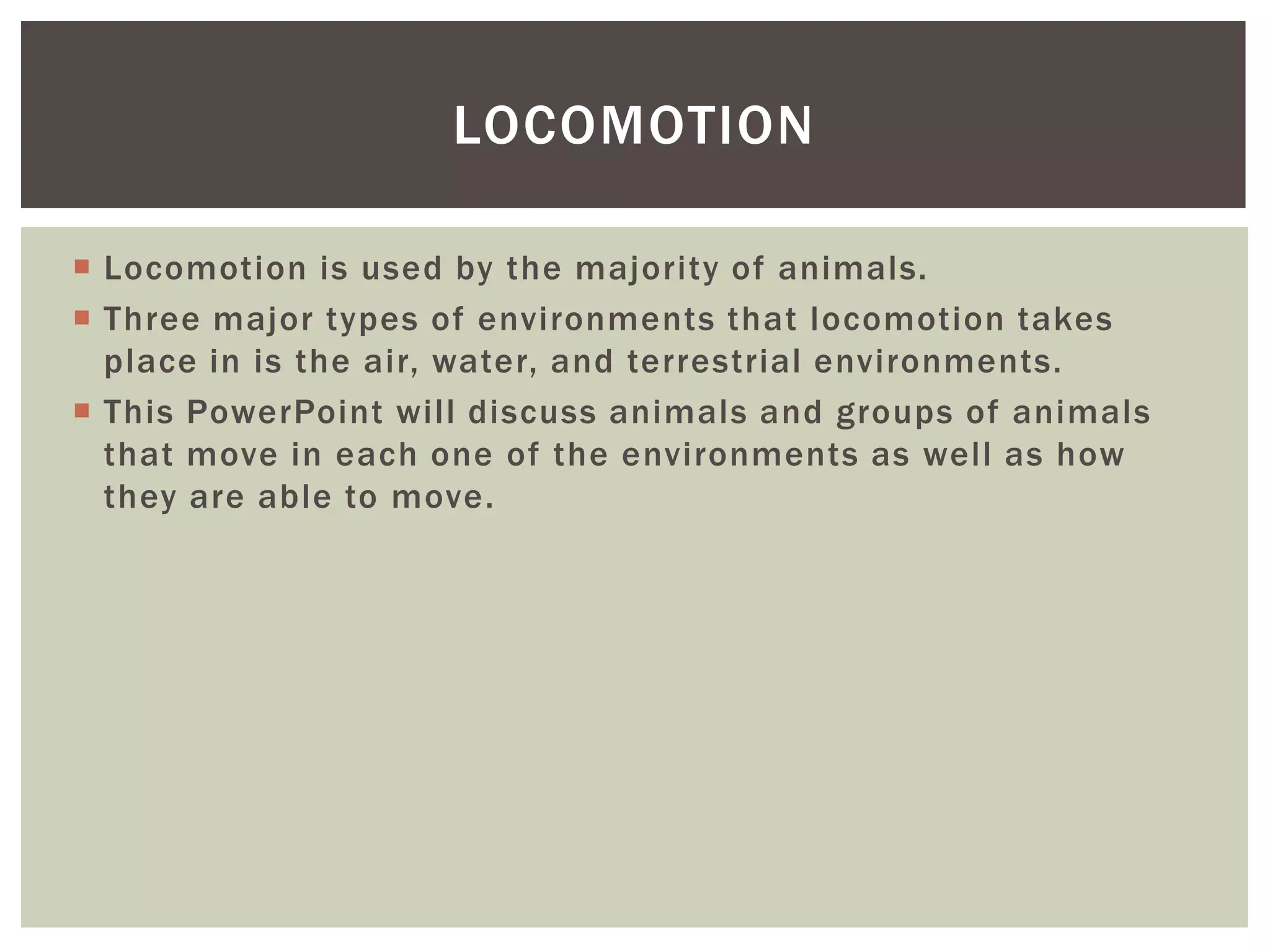The document explores the various locomotion methods used by animals in three main environments: air, water, and land. It discusses adaptations in birds, such as wing shapes and body structures for flight, as well as cephalopod locomotion techniques like jet propulsion in water. Additionally, the document highlights the movement mechanisms of arthropods, emphasizing the role of hydraulic systems in their locomotion efficiency.


















